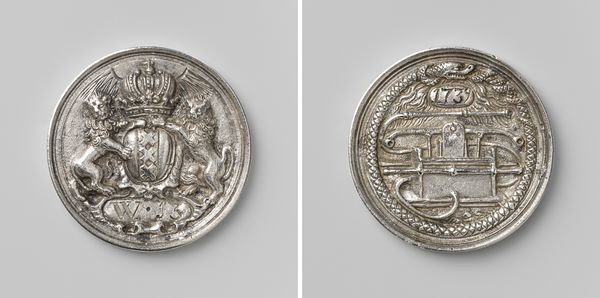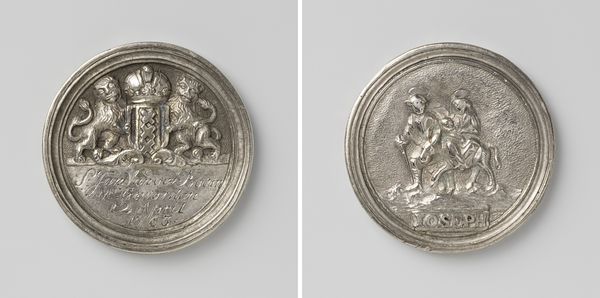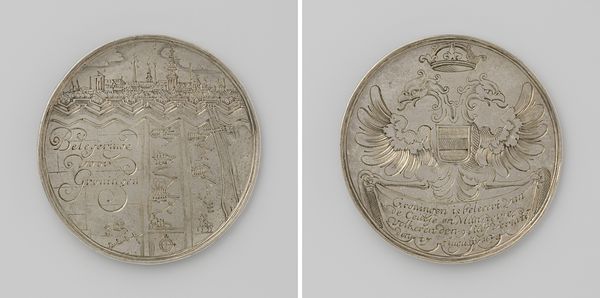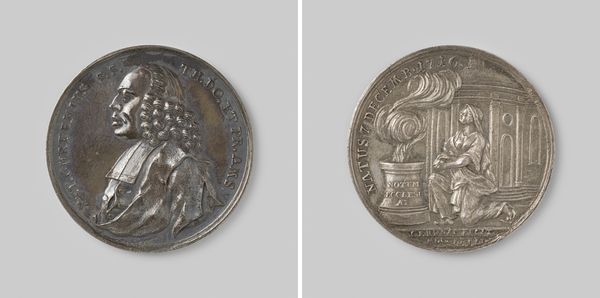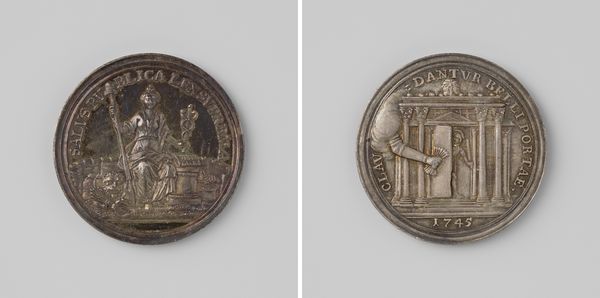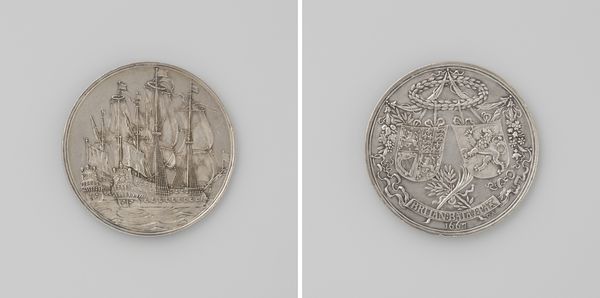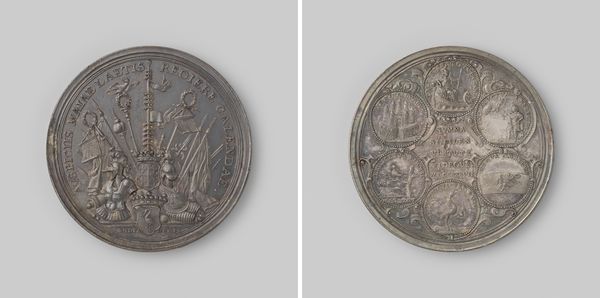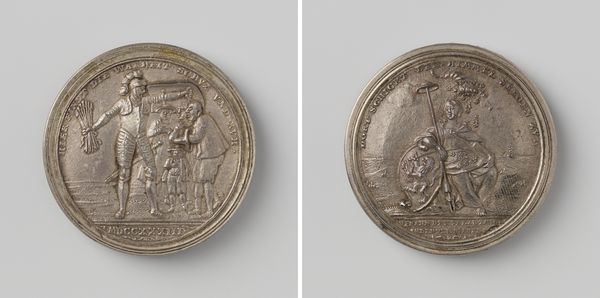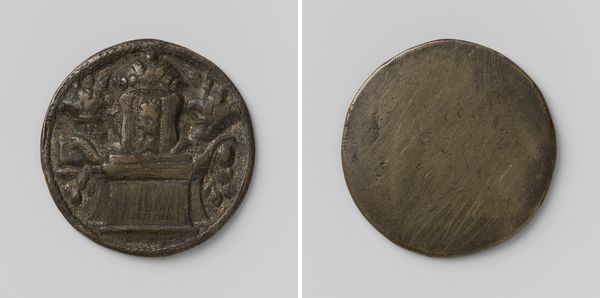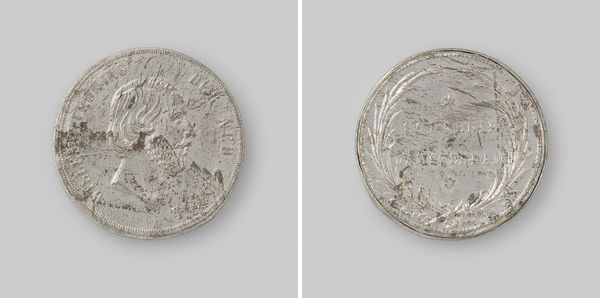
Amsterdam, brandspuitpenning van wijk 57, geslagen ter ere van luitenant Hendrik Asschenbergh 1784
0:00
0:00
Dimensions: diameter 4.1 cm, weight 23.86 gr
Copyright: Rijks Museum: Open Domain
Curator: This intricate piece is the Amsterdam fire brigade medal of district 57, created in 1784. It honors Lieutenant Hendrik Asschenbergh. The material appears to be metal, with elements of relief and engraving. What strikes you first about this piece? Editor: Immediately, it's the contrast. One side showcases symbolic authority, the other utilitarian purpose. The sharp, precise lines depicting the fire pump set against the softer, flowing heraldic imagery creates a fascinating tension. Curator: Absolutely. Let's break that down further. The side with the Amsterdam coat of arms—crowned, flanked by lions—represents civic power and status. Notice how it proudly displays "W.57" beneath the crest, staking claim for that specific ward of the city. Editor: And conversely, the other side seems to deprioritize symbolism in favor of straightforward visual representation. We see what looks to be the mechanical ingenuity necessary for fighting fires in that era. There’s even an odd cartouche at the top-- blank and available for lettering or something else. Curator: Consider also the social stratification reflected in this object. On one hand, a lieutenant, likely a man of some standing within the community, is honored. It is through the civic body’s commitment that they were able to provide and recognize individual action within a larger structure. The medal commemorates a collective effort. Editor: The very deliberate composition leads me to conclude that this piece achieves more than merely function as decoration and/or ceremonial objects, but rather these details and arrangements signify some order, or structure to the space around which civic life existed and coalesced. Curator: I agree. The visual rhetoric here subtly reinforces established social order while simultaneously honoring a man who contributed to community safety. Both were highly valued aspects of 18th-century life, making it function both didactically and as commemoration. Editor: Seeing these juxtapositions invites us to reframe discussions of fire and public safety more broadly to include dialogue across race, gender, and socioeconomics as we move to the modern day. It can highlight marginalized or often overlooked elements. Curator: It does that. To appreciate this medal is to engage with the complexities of 18th-century Amsterdam society, from hierarchies of power to acknowledgments of shared human risk and responsibility. It also invites discourse in the modern era. Editor: Indeed. Paying closer attention to composition and materiality yields the potential to unveil rich historical information or connections.
Comments
No comments
Be the first to comment and join the conversation on the ultimate creative platform.
